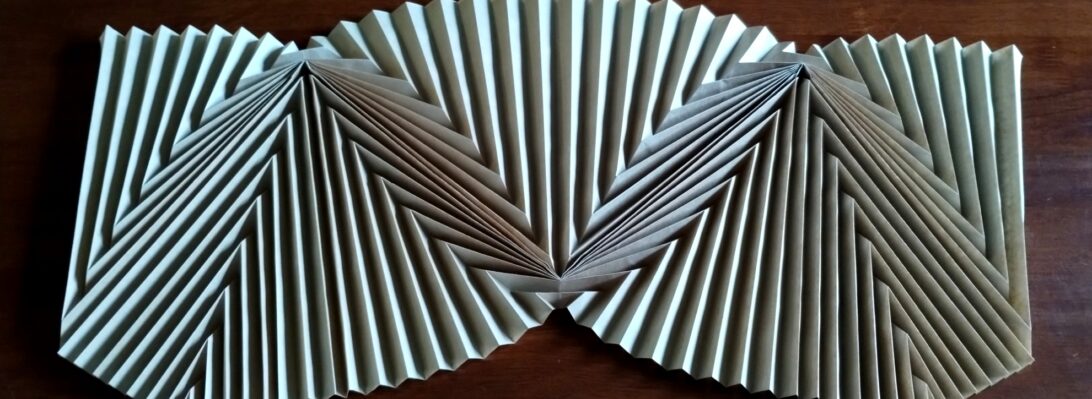Riccardo Foschi frequently shares crease patterns for his new designs on social media. When I saw “Mushu” I knew I had to try and fold it:

It is rare to find a “happy” dragon, but this one beams a positive energy that makes you smile. There is lots of detail to take in – the head has branched horns, smiling eyes, lovely colour-changed curly whiskers, nostrils, teeth, a lovely wiggly tongue, lower jaw and a beard. A lovely set of back spikes, each leg has 3 toes and the beautiful fan tail caps off the beastie.

Made over a period of a week, from 5x 2:1 rectangles of odd spotty black Ikea Kraft. Sections form variously tail, legs, body and head modules, all of which ingeniously interlock without the need for glue. Riccardo also states that it can be made with a single 10:1 rectangle, but I thought that would be too wasteful when cut from a paper roll, so decided on the modular approach.
My problem with crease patterns is that, although they show the major creases, they do not really hint on the shaping or fold order. The head, in particular, took me a while to sort out. I decided, contrary to the designers photo, to fold the legs differently – I think they look more natural this way (but I folded forward, backward, forward and back many times before deciding on this configuration).

The pleat structure that makes up the “backbone” has a natural channel on the inside for a wire skeleton (I added some heavy gauge aluminium wire, and glued it in place) that then allows you to easily bend and pose the model.
The body is simple, with a pleat structure that hints at scales. The collapse at the shoulders is VERY thick, making forming the legs the real challenge. I found when the payers were moistened with MC they became malleable enough to pose.



I’m trying to fold this as well! Any chance you could give me a tip on how you folded the back spikes? I’m having some trouble figuring out how to do them.
I found the instructions made sense to me – it is all about pleat management
The spine spikes first appeared when I test folded the tail (see my macquette image) – the middle pleat is then treated to a series of reverses (as the pleat is make up of a cross-sheet pleat sequence), you can raise the flaps, easing a gusset in under neath so it sits flat – once you get the technique it is fairly easy to consistently do this
Ah I see, thanks!